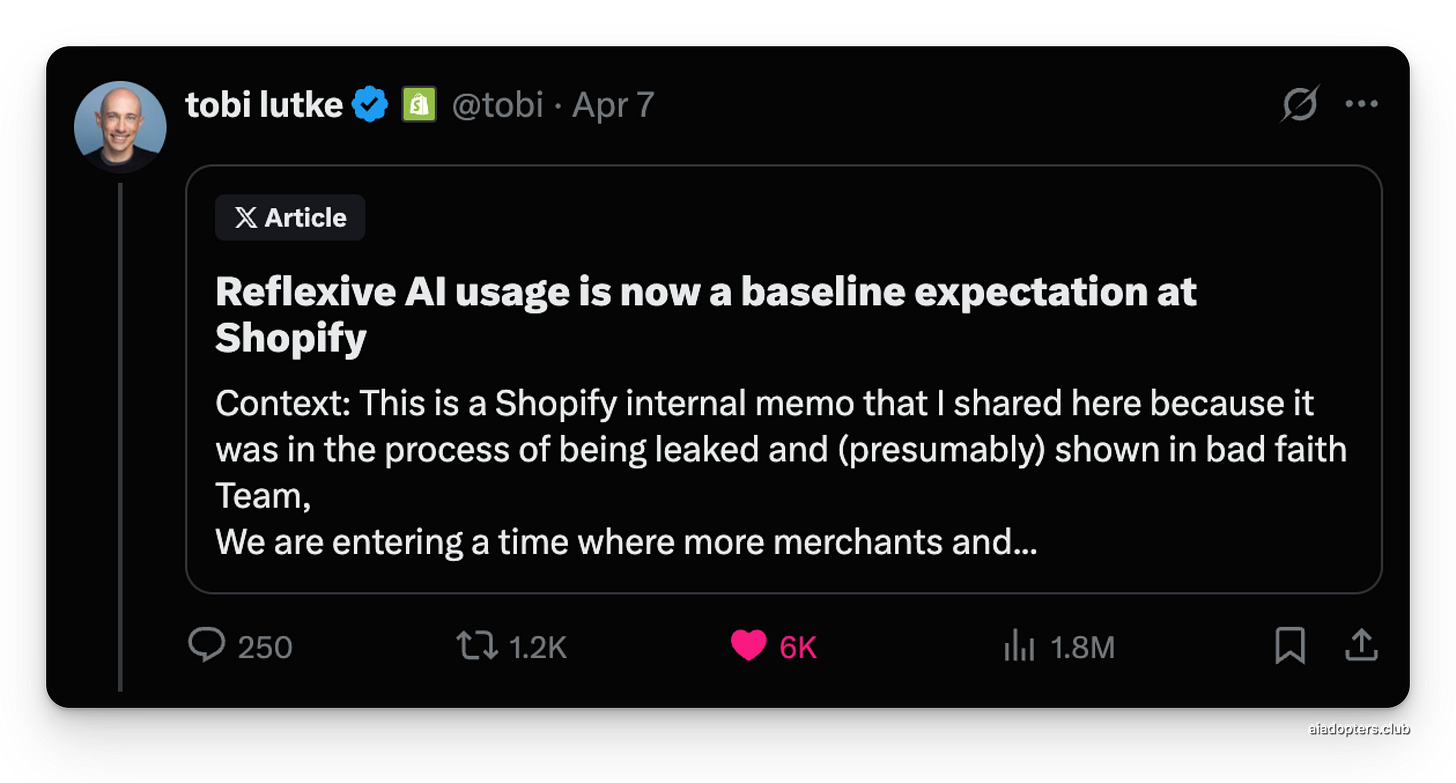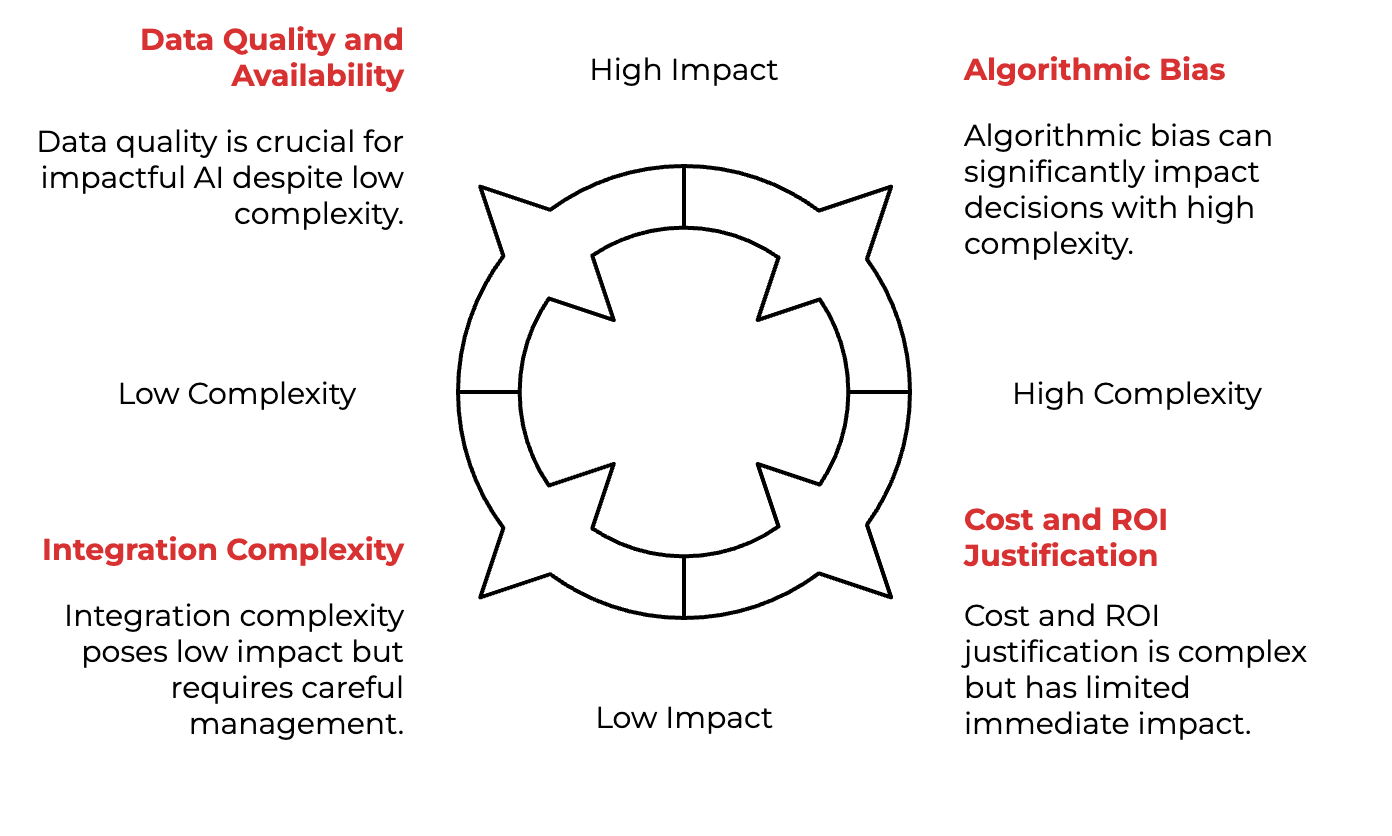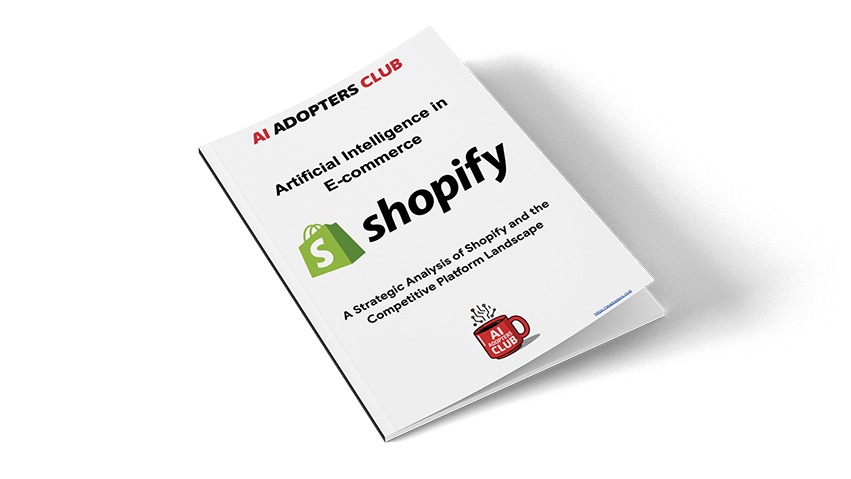Inside Shopify's AI Revolution: The Implementation Blueprint Others Will Follow
A deep dive into how Shopify's mandate is reshaping commerce platform strategy
Hey Adopter,
When Shopify CEO Tobi Lütke declared that "reflexive AI usage is now a baseline expectation at Shopify" in an internal memo earlier this month, he wasn't just setting company policy. He was drawing a line in the sand for the entire e-commerce ecosystem.
His stark assessment? "I don't think it's feasible to opt out of learning the skill of applying AI in your craft... stagnation is slow-motion failure. If you're not climbing, you're sliding."
This isn't just another tech leader pushing AI hype. It's the head of a platform powering millions of merchants worldwide, stating what many executives are thinking but few are saying: AI proficiency isn't optional anymore. It's the new baseline.
How Shopify's Strategy Reveals a Bigger Shift
The integration of AI in e-commerce is rapidly transforming from a technological enhancement into a fundamental driver of competitive advantage. Shopify has strategically positioned itself by integrating user-friendly AI tools like Shopify Magic and Sidekick, primarily aimed at empowering its core SMB audience by simplifying tasks like content creation, image editing, and basic customer support automation.
What makes this approach significant is how it contrasts with enterprise competitors. While Shopify focuses on democratizing AI through simple tools, platforms like Adobe Commerce (via Adobe Sensei) and Salesforce Commerce Cloud (via Einstein AI) emphasize deep integration with their respective data ecosystems, enabling sophisticated personalization and analytics capabilities tailored for larger businesses.
Implementation Challenges Are Consistent Across Platforms
Despite the opportunities, AI adoption presents significant challenges that businesses must navigate:
Platform Strategies Reveal Deeper Divides
My analysis of the competitive landscape reveals distinct AI strategies tied to each platform's core market and strengths:
Shopify, Wix, and Squarespace prioritize AI for simplification and creation, making website building and basic e-commerce tasks easier for SMBs and individuals.
BigCommerce leverages its Open SaaS model through strategic partnerships, notably with Google Cloud AI, alongside its app marketplace to provide flexibility.
WooCommerce, as an open-source WordPress plugin, depends almost entirely on third-party plugins for AI capabilities, offering immense flexibility but requiring significant technical management.
Adobe Commerce and Salesforce Commerce Cloud take advantage of their enterprise strengths, leveraging unified customer data across multiple touchpoints through their AI engines to deliver sophisticated personalization and analytics.
Today I'm providing exclusive access to my comprehensive 34-page report "AI in E-commerce: A Strategic Analysis of Shopify and the Competitive Platform Landscape" for premium subscribers.
This in-depth analysis covers:
Detailed evaluation of Shopify's complete AI toolkit (Magic, Sidekick, Flow, Fraud Analysis)
Competitive analysis of six major e-commerce platforms' AI capabilities
Implementation failure patterns and how to avoid them
Future AI trends reshaping e-commerce through 2025 and beyond
Strategic blueprint for leveraging AI based on business size and technical maturity
Actionable recommendations for executives and consultants
Get it right here 👇
The Future Is Coming Faster Than Most Realize
The report identifies several emerging trends that will further transform e-commerce in the coming years:
Hyper-Personalization: The evolution from segment-based targeting to truly individualized, real-time experiences. This requires AI to analyze vast streams of data to adjust content, recommendations, and pricing instantaneously based on specific user contexts.
Expanding Role of Generative AI: Moving beyond text creation to generating unique visual content, code, marketing campaigns, and even product design variations. By 2025, projections suggest GenAI could account for 10% of all product data produced, up from just 1% in 2021.
Advanced Predictive Analytics: AI-driven predictive analytics are becoming crucial for operations, particularly in supply chain and inventory management. AI algorithms analyzing wider data ranges can reduce forecasting errors by 30-50%, leading to better inventory planning.
Conversational AI Evolution: The progression from basic chatbots to sophisticated AI agents capable of understanding context, nuance, and emotion while autonomously handling complex tasks and workflows.
Strategic Recommendations for Action
Based on this analysis, businesses should:
Adopt a Contextual Platform Strategy: Recognize there's no "best" AI-powered platform. SMBs may benefit from user-friendly solutions like Shopify, mid-market businesses might need BigCommerce's flexibility, while enterprises requiring deep data integration may find Adobe or Salesforce more suitable.
Prioritize AI Investments Based on ROI: Focus initial investments on areas with clear potential for measurable return, such as AI recommendations for high-margin products or fraud detection in markets with high chargeback rates.
Develop a Phased Implementation Roadmap: Structure AI adoption methodically, starting with readiness assessment, then foundational setup, followed by pilots and integration, and finally scaling successful initiatives.
Embed Ethical AI and Risk Mitigation from the Start: Treat ethics and security as foundational elements, not afterthoughts. Implement privacy by design, actively work to identify and reduce bias, and maintain human oversight.
Address the AI Talent Gap Strategically: Combine upskilling existing employees, strategic hiring, partnerships with AI specialists, and leveraging vendor support to build necessary capabilities.
The professional world is experiencing a fundamental shift. Those who see Shopify's AI mandate as an opportunity rather than a burden will find themselves with unprecedented career leverage.
The question isn't whether you'll adapt. Whether you'll be ahead of the curve or playing desperate catch-up.
Adapt & Create,
Kamil






